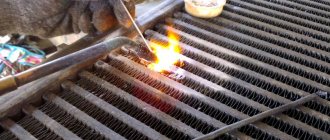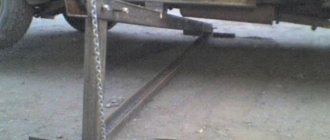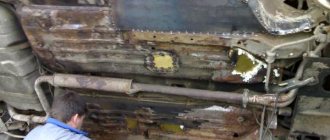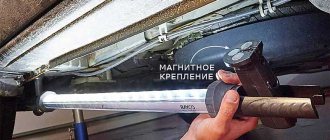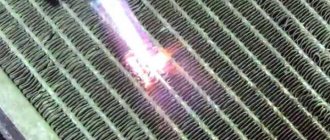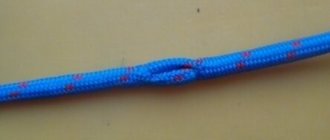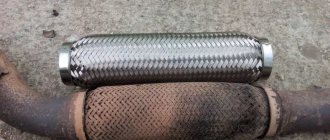How to find out what year the samovar was made?
Expensive and modern samovars
The cost of a samovar and the year of its manufacture are not always directly related.
There are samovars of recent release, for example 1990, even more modern ones, for example 2005 - 2018, costing 100 - 150 thousand rubles. At the same time, they are richly decorated with various applied details, but the main thing in these samovars is not the decoration, but who they were intended for. There are two types of such samovars. Samovars are expensive, but donated - for example, the samovar of the Tula craftsman Vladimir Bashkin, given to His Holiness Patriarch of All Rus' Alexy II. And samovars are also expensive, but for which a lot of money was paid - these are exclusive samovars produced by the Stamp plant, presented to Vladimir Putin. All other samovars can also cost 50 thousand and even 500 thousand, such as Nazar Lisitsyn’s samovar from the 1820s - 1830s, owned by Alexei Borisovich Miller, the head of Gazprom.
And yet, there is one distinctive feature that distinguishes them from modern samovars of just one Stamp plant - the presence of stamped rather than cast parts in the design of samovars. How to find out the year of manufacture of a samovar from the Stamp plant? It’s very simple - a samovar from the 60s certainly stands on a stamped base. This fashion arose from simplifying the design and the desire to minimize costs. The fashion emerged in the early 1950s, and to a lesser extent in the mid-1930s. All mass-produced samovars stand on stamped bases.
The Vannikov Stamp plant revived the production of samovars after the war in 1949, this is the date recorded on the vast majority of post-war samovars. In addition, on these samovars, the release date of which is unknown, but most likely it was 1949, a star-shaped marking appeared. According to one version, such samovars, with a star, were given to participants in the Great Patriotic War as rewards. They are made to a higher quality than ordinary mass-produced samovars - they have a cast base, a characteristic shape of the tap, often a cast steam engine, in general, the samovar is made to last, and it will work for many years, like the old pre-revolutionary samovars.
On samovars from the time of the New Economic Policy, in contrast to the first post-war ones, one way or another there is a hammer and sickle sign.
DIY repair methods
Restoring a samovar is a painstaking and difficult process. If you are not interested in the appearance of the product, you can eliminate some of the causes of broken dishes at home. Only specialists can restore a samovar without losing the beauty of its body. The following tools and additional materials may be needed to restore the product yourself: tin, hammer, abrasive, sandpaper, tow.
Stages of repair at home:
- restoration of the hull (patching cracks, eliminating leaks, straightening (removing corrosion);
- cleaning the product from the inside (descaling, tinning);
- replacement of parts (if necessary);
- improvement of appearance (polishing).
Hull restoration
If there are dents on the samovar, you can straighten the product yourself. To make it easier to correct unevenness, it is recommended to unsolder the free pipe. This simple technique allows you to freely place your hand, as well as tools, inside the samovar. In this case, a wooden block will perfectly play the role of an anvil. To level the body, you need to use a rubber mallet and measure the impact force so that the dent is straightened. It is better to straighten the product by weight, so the pressure will not be transferred to the body of the samovar.
Cracks in the housing can be soldered if a torch is available. Often the samovar splits from the bottom of the flame tube and, as a result, begins to leak. Restorers recommend soldering the body of the product from the inside - this way the seam will be barely visible.
Faucet repair
Grinding in the faucet is quite possible at home. If it leaks from the bottom of the product, it means that the key is located high in it. Conclusion: it needs to be lowered lower, having been treated with lapping paste beforehand. Next, the samovar is filled with hot water. Use smooth circular movements to turn the key in the tap until the liquid stops dripping. If it does not open at all, the mounting hole can be treated with a “liquid key”. After the time specified in the instructions, you need to lightly hit the stuck part of the structure with a hammer.
Lubricate the samovar key with lapping paste
Then insert the key into the faucet. Fill the dish with hot water. Turn the key several times.
Ready
Replacing internal elements
There is a large assortment of faucets for samovars on sale, so replacing this accessory is quite simple. An important step in this matter is to correctly measure the parameters of the part. After purchase, you should lubricate the faucet with vegetable oil or Vaseline. This technique increases the service life of the product.
The grate bars in the samovar often fail. Before replacing the part, it is necessary to desolder the pipe. Its lower part should be checked for cracks. After these steps, a new grate is placed in the pipe and the body is cleaned. Next, the remaining parts of the samovar are installed in their places.
Replacing the faucet Soldering the pipe
We mount the grate and solder the pipe back
Faucet repair
In old samovars, the faucet is often stuck or leaking. You can solve these problems as follows:
- If the faucet does not turn, you can lubricate it with WD-40. After this, wait a few minutes and tap the faucet handle through a wooden block to activate it.
- If the faucet key is leaking from below, it means it is set too high. This can be corrected using “Valve” paste. It is necessary to remove the faucet, wash it, rub it with paste, and install it back. Then fill the samovar with boiling water and turn the tap in a circle until it “sits” in its place. The main thing is to act smoothly so that the key does not fall inside.
- If the faucet key is leaking from above, it must be replaced with a new one; there are simply no other options for action in such a situation. It looks like the faucet body has worn out and shrunk in size.
How to get rid of scale in a samovar: the right method
Without solving this problem, repairing the samovar is not possible. Scale is a sediment that appears as a result of boiling low-quality water. In fact, you can use synthetic products from the mass market designed to remove scale from electric kettles. But you can also make your own anti-scale product or several at once.
To get rid of scale in a samovar, you will need
- Any store-bought product with a minimum of ingredients (cheap and relatively natural);
- Lemons;
- Lemon acid;
- Vinegar;
- Potato peelings.
The first method is the simplest, but not the most environmentally friendly. Subject the samovar to the actions prescribed by the instructions on the device. Be sure to rinse it with water after all manipulations are completed.
Boiling the carbonated drink “Sprite” in it for several minutes will help you easily get rid of scale in a samovar.
Second method: pour a whole bottle of acetic acid into a filled samovar, heat the water in the samovar to 60 degrees, do not boil. Let this mixture sit in the samovar for about an hour, then rinse off. Other acids should not be used, they are more aggressive. That is, their danger lies not only in particles that may remain on the walls of the samovar, but also in toxic vapors during the action of acid.
In what cases is it necessary
Repair of samovars may be required in case of mechanical damage to the products (dents, holes), as well as oxidation or scale formation on the surface of the containers. The inside of the tank must be covered with a protective layer of food-grade tin, from which all metal impurities have been removed. This rule should not be neglected, since brass or rust formed in places of leaks emit oxides that are harmful to health and dangerous bacteria, which can lead to poisoning or diseases of internal organs.
The presence of microcracks and holes in the samovar not only significantly impairs the heating of water, but can also cause severe burns from leaking liquid or steam. Some older products used to be sealed exclusively with lead. This metal is considered heavy and poisonous to humans. First of all, you should check the soldering for the presence of this material in order to completely remove it.
Cracks in a samovar are not a reason to get rid of the product
Kinds
Restoration of samovars can be complete, partial or museum. In the latter case, the appearance of the product is restored, but its further use for its intended purpose is impossible
Partial repairs involve subsequent use, but not much attention is paid to restoring the original appearance of the item. When a samovar is completely restored, the internal parts of the product and its outer body are updated
Partial
Most often, in order to restore the basic functions of the samovar, it is enough to polish the device, nickel plating, tinning, replacing handles, fittings, or eliminating faucet leaks. To polish the samovar, ordinary dishwashing detergent will do.
If the key to the samovar tap cannot be turned or removed, then to eliminate this problem you will need special anti-corrosion agents that reduce the adhesion of metal to rust. After treating the part with lubricant, you should carefully remove it from the tap. You can repair the elements of a vessel with your own hands using nickel plating - this is the process of building up a layer of metal on a damaged area. The procedure is simple to perform, but is not applicable for tin, lead and zinc items.
Comprehensive
A service such as the complete restoration of a samovar is not cheap from specialists. However, some problems can be fixed on your own. For example, dents can be easily smoothed out using a rubber hammer. Tap the protruding part of the dent using gentle movements. You can also correct unevenness using mandrels. A metal hammer leaves impact marks. It is not suitable for straightening dents.
A comprehensive restoration necessarily includes such procedures as replacing worn-out fittings, removing plaque, lapping, polishing, tinning, and plating the product with nickel or silver. You can also solder a samovar at home. An important step is to find out exactly where the water is leaking from. To work, you need to get a blowtorch or a propane-oxygen torch and copper-phosphorus solder.
The procedure is as follows:
- Before sealing the dishes, they must be thoroughly cleaned of dirt.
- Next, prepare the flux: take 1 tablespoon each of borax and boric acid, dilute them in 1 glass of boiling water.
- Cracks are treated with prepared flux.
- The problem area is then heated using a torch. The metal should take on a reddish tint. If overheated, it will be much more difficult to solder.
- Touch the solder to the heated area of the samovar. The metal will slowly begin to spread, falling into the cracks.
Soldering must be done on a heat-resistant stand. Good materials for this are brick or asbestos plate.
Varieties
There are several types of samovar restoration:
- If only the appearance is important and the samovar will be used as an exhibit, then “museum” repairs and restoration of the outer covering are used. Such a device will most likely no longer be able to heat water.
- During partial restoration, individual elements of the product are replaced in order to bring it into working condition, but no attention is paid to appearance.
- During a complete restoration, the external and internal parts of the samovar are replaced, and the coating is also updated.
It is best to entrust this work to specialists, since not everyone can do soldering or tinning with their own hands. You should choose a method for restoring a product based on your needs and the degree of damage. If the samovar is too old and oxidized, and its elements do not function well, then it is recommended to carry out a complete repair.
Decorative restoration of external covering
Replacing internal parts
Complete restoration
Partial
In order to add shine to the oxidized outer surface of the samovar, polishing is required. To do this, you can use specialized products (Metal Polish or its analogues) that are suitable for cleaning brass, copper or aluminum. Folk remedies are also used, for example, soda or fine river sand, but these methods can scratch the surface of the product and are also not very effective compared to professional compositions. If small defects appear, they can be sanded with Goya paste.
If the samovar is too old, with a large layer of oxide that cannot be removed with conventional chemical means, mechanical grinding will be required. It will remove everything unnecessary, but can lead to the formation of a hole if you do not clean it carefully. Tinning is also done to prevent oxidation of the samovar from the inside, and for its external part - nickel or silver plating. This is necessary to prevent corrosion, as well as to add shine and improve appearance.
To check the tank for leaks, fill it with water and melt it. When heated, the metal expands, so the gap may only be noticeable during operation. If the samovar's handles are made of wood or are heavily rusted, they can be replaced with the same ones or ordered new ones (at a factory where products from non-ferrous metals are produced).
Over time, the samovar oxidizes and scale and rust appear on its surface, which must be removed.
Comprehensive
Complex restoration of a samovar includes processes similar to partial repair, but other methods are also used. Most often, with this restoration option, all fittings, non-working spare parts, as well as those that look bad, are replaced with new ones or carefully restored. All dents are removed from the surface of the product, and the places where they were are checked for microcracks. The inside of the samovar is descaled using chemicals or citric acid. After this, it is degreased and tinning is carried out.
The outer surface is also restored. It is cleared of oxide and plated with nickel or silver. The samovar needs to be checked for holes and microcracks along the entire surface in order to find leaks and seal them with food solder.
If water leaks from the bottom of the faucet, this means that the key sits too high in it and requires grinding.
All parts must be removed from the housing
New handles can be turned from the wood you have on hand
Everything inside should be tinned with clean tin.
A propane and oxygen torch will be useful for assembly.
All parts must be thoroughly cleaned and checked for cracks before assembly.
Faucet assembly
Cost of restoration
| Firewood samovars | |
| Vintage antique samovars (manufactured before 1917) | from 10,000 rub. |
| Transitional Soviet samovars (produced 1917 - 1950) | from 8000 rub. |
| Soviet and modern samovars (production 1950 - present) | from 5000 rub. |
| Electric samovars | |
| Electric samovars with a volume of 1.5 - 2 l | from 2000 rub. |
| Electric samovars with a volume of 3 - 4 l | from 2500 rub. |
| Electric samovars with a volume of 4 - 5 l | from 3000 rub. |
| Electric samovars with a volume of 10 l | from 4000 rub. |
| Electric pantry samovars with a capacity of 45 l | from 20,000 rub. |
Selection of components / additional repairs
| Installing a set of plastic handles | from 180 rub. |
| Installing a set of wooden handles | from 250 rub. |
| Pipe repair (extension, crack welding) | from 1000 rub. |
| Pipe replacement | from 2000 rub. |
| Replacing the grate | from 400 rub. |
| Replacing the ash pan | from 200 rub. |
| Selection of crane pair (plug and branch) | from 400 rub. |
| Selection of the top cover | from 1000 rub. |
| Selecting a burner | from 400 rub. |
| Selecting a cap | from 400 rub. |
| Installation of a steam engine | from 500 rub. |
| Replacing the heating element | from 990 rub. |
| Replacing the bottom | from 100 rub. |
| Add. spare parts for replacing heating elements (wires, block, insulator, gasket) | from 200 rub. |
| Installing an automatic shut-off system when boiling | from 2000 rub. |
| Nickel or copper plating of the outer surface of the samovar | from 2500 rub. |
| Hand painted samovar | from 2000 rub. |
Causes of samovar tap failure
First of all, let's look at the main reasons that can damage the samovar faucet. The first, and most basic, reason is non-compliance with operating rules. Today, few people know that from time to time (especially before long-term storage) the tap must be removed and thoroughly lubricated with any edible fat, be it vegetable or butter, or edible petroleum jelly. Lack of lubrication leads to the key sticking to the body, and later may even fall into the tap socket. Here the problem will be much more serious. The second reason is too long use. It's no secret that nothing can be stored and serve us forever.
How to extend the life of a samovar? Tips for using a water heater
A restored samovar should be doubly protected from damage, so during its operation you must adhere to the following rules:
- Do not leave a hot samovar empty without water.
- In the cold season, drain all the water from a samovar that is rarely used.
- Handle the samovar with gloved hands in order to clean it less often.
- When sending the samovar for storage, the key tap should be lubricated with edible fat.
As the popular saying goes: “With a brawler samovar, tea is more important and conversation is more fun.” Don't forget traditions, give the old samovar that is stored in the attic a second life, and fill the family tea ceremony with new meaning!
« Return to list of articles
Necessary tool
If you have decided what to solder with, then you should also decide what to cook. When soldering brass, you will need the following tools and accessories:
- soldering iron with a power of 100 W and 0.5-1 kW;
- gas burner complete with gas cylinder;
- crucible;
- scales;
- vice;
- knife;
- scissors;
- file;
- pliers;
- clamp;
- sandpaper;
- brush;
- brush.
Brass is very often used in various household devices, so when they break, the question arises of how to solder brass. Such soldering is quite possible, but requires certain conditions and rules to be met.
Soldering brass, which allows you to obtain high-quality and reliable connections, is a technological process that involves the use of a gas torch, as well as special solder. The latter is wire, the material of which can be tin or an alloy of this metal with lead. If you thoroughly study the features of such a process, as well as prepare all the necessary equipment and consumables, then you can successfully perform it even at home.
Brazing process for brass parts
How to choose the right samovar
Choosing a samovar is a responsible matter. You need to imagine for which company they are buying it, and under what conditions it will be used.
How to choose the right wood-burning samovar
Without changing constructively, the materials from which traditional representatives of Russian life were made changed. Ancient vessels for heating water using wood (fire) are made of copper, while more modern ones are made with the addition of brass or entirely made of brass.
The device has remained virtually unchanged. Both ancient and modern products are suitable for soulful tea parties.
To select a samovar using coal/wood and use it for its intended purpose, it is important to pay attention to the following characteristics:
Bowl volume. For a large family, it is suitable with a capacity of 5 liters or more. For one person 2 liters is enough. Size may affect strength.
Strength. It is recommended to choose one with stiffeners. For practical use, forged models with thick walls are purchased. The shape affects the service life of the samovar
The “glass” option, “patterned”, “edges” - have a complex and stable frame.
Attention! Ball-shaped products are very fragile and require careful handling as they are subject to deformation. It is not recommended to buy them.
Tinning the body
Check the fastening points of parts and seams. They should be uniform, without sagging or depressions.
Brazier. Specify the material used to make the combustion chamber. High-quality models will not need to be cleaned for a very long time, traces of use are practically invisible, and cleaning will not cause difficulties. If you choose a cheap samovar for firewood, you should be prepared for oxidation, burnout, and even the appearance of moss.
Tap. It should fit snugly into the seat. It is better to choose a samovar whose tap is not at the very bottom. Otherwise, uncleaned scale will end up in your cup of tea.
Warning! The inside of the device must be lined with food-grade tin. Water should not come into contact with brass, as this can lead to poisoning.
How to choose an electric samovar
It is difficult to choose this model if the design features that you should pay attention to are unknown. After all, the wrong purchase will upset you, and the products are expensive
How to choose the right one - nuances:
Material. Copper will have to be constantly polished so that it always pleases its owners. Nickel plated is more beautiful, the surface is painted. Form. In appearance, an electric samovar can be round or cylindrical. Ball shaped is less durable. Volume. Electrical appliances from 3 to 7 liters are in greatest demand. The volume should be chosen based on the fact how many people drink tea daily. Performance
It is important to check it before purchasing. Stores should provide the opportunity to check the functionality and a 2-year warranty for the range of samovar products. Quality
The new device must not have any damage, scuffs or cracks.
Painting. If you want to choose a painted model, you should check the quality of the dye.
Pens. They should be well secured and not loose. Bottom. Place on a flat surface or stand. It shouldn't wobble.
Which samovar is better - nickel-plated or brass
Nickel plating is a complex, expensive process. However, silver-colored products are not more expensive than brass products. It is distinguished by its aesthetic appearance and long service life.
Important! Nickel does not allow the copper-zinc alloy to oxidize; it is only sprayed on top of the base material.
Brass is characterized by high strength, resistance to corrosion and high temperatures. If the samovar has a copper tint, it means it is made of an alloy that contains more copper.
Brass has good thermal conductivity and is easy to clean.
If you choose which samovar is better, copper or brass, then it is important to know that nickel-plated models will retain their shine and even finish even after 20 years
Returning the shine to the samovar
To make the outer surface of the samovar shine, it can be treated with polish. When buying this substance in a store, pay attention to the instructions - it is important that the product is compatible with the type of metal from which your samovar is made. Polishes allow you to clean the metal walls of the product from dirt, and at the same time cover them with a special protective film.
The polish may not be effective if the deposits on the metal are too thick. In this case, the walls of the samovar will have to be sanded. This procedure is extremely undesirable for antique products, because it can lead to a decrease in the strength of the metal, and even to the appearance of holes in it.
If you are not a supporter of the use of chemicals and polishing, check out the folk methods of “rejuvenating” samovars:
- Rubbing the samovar with sand. We wash the samovar with warm soapy water, dry it and rub it with the finest river sand, sifting it in advance.
- Rubbing the samovar with soda or chalk. Soften regular baking soda with water and rub the samovar with it until shiny. The same can be done with chalk. It is believed that soda cleans metal faster, but with excessive pressure it can leave scratches on the walls of the samovar. At the same time, it is almost impossible to damage the metal with chalk.
How to restore a samovar
- For a preliminary estimate of the cost of repairs, you just need to send photos of the samovar using the form above and our manager will contact you;
- After agreeing on the preliminary cost of the work, you need to deliver the samovar to our production site in any convenient way:
- Bring it yourself to the production facility in Tula, and at the same time you can see our restoration line;
- Deliver to our courier in Moscow - our courier delivers parcels throughout Moscow weekly and, if necessary, will be able to pick up the samovar from you for restoration;
- Send by Russian Post, transport or courier services to the address of our production.
- After receiving the samovar, we conduct a final analysis of wear and condition, flaw detection using magnetic and ultrasonic analysis and inform you of the final cost of the work, agree on the restoration time;
- We carry out restoration and provide a photo report upon request;
- We will send you the finished samovar.
You can pay for our work both before shipping and upon receipt of the samovar.
Conditions and scope of soldering
Before understanding the question of how to solder brass, you should thoroughly study all the features of such a technological process. When performing soldering, which is one of the methods for producing permanent connections, molten solder is introduced into the gap located between the parts being connected, which acts as a fastening element.
An important condition for soldering is that the solder, which is melted using a gas burner, must melt at a lower temperature than the material used to make the parts being joined. This technology (in some cases it is the only possible way to obtain a permanent connection) allows even dissimilar metals to be reliably soldered together.
Brass soldering diagram using a gas torch
It is completely wrong to compare soldering with a technological process such as welding, which assumes that not only the special solder wire will melt, but also the metal of the parts being connected. It is precisely due to the fact that when performing soldering, the solder is exposed to the main temperature effect, the characteristics of the parts being connected and their integrity remain unchanged. This feature allows this technique to be successfully used for joining metal parts that are even very small in size.
Russian samovar in interior design
Today, samovars are in great demand not only among tea drinkers, but also among connoisseurs of Russian souvenirs, as well as collectors. A beautiful samovar has always served as an excellent interior decoration. As you know, a samovar is an attribute of the kitchen, although its location may vary depending on the style of the interior. So, in a living room made in Russian ethnic style or rustic country style, where you can find “log” decor, cabinets and shelves painted with flowers or birds, chests and long benches, you can’t do without a samovar. After all, it is he who will best emphasize that special comfort and warm atmosphere that is so characteristic of Russian living rooms. As for modern kitchens, they are often so small that the owner thinks that there can be no question of any samovar. However, if you place several wooden kitchen utensils in the kitchen, for example, wooden bowls, spoons and stands, which can serve not only a decorative function, but also be used for their intended purpose, then a small samovar will be the right place here. By the way, it has been noticed that if there is a samovar on the table, then household members often get together to have tea, and at the same time discuss pressing matters in a warm conversation. In restaurants and cafes, according to the observations of Positive Repair, Russian samovars can be used both for preparing delicious drinks and for maintaining a special flavor of the atmosphere.
https://www.remontpozitif.ru
Tinning a samovar: we do it ourselves
Metal utensils have one not very pleasant property - air and ordinary food products act in such a way that over time the surface of such utensils oxidizes. And oxidation entails covering the surface with a film, which poses a certain threat to human health.
To prevent such a misfortune from happening to your samovar, you need tinning. That is, the surface of the samovar, the one that comes into contact with water, will be covered with a layer of metal that is less susceptible to external influences. Most often, such a layer is represented by tin, and the process of coating with tin is called tinning. By the way, not only a samovar, but also an ordinary pot, a cast iron pot, can be subjected to this preventive procedure, which is neither particularly expensive nor very complicated.
Tinning a samovar at home:
- Clean the inner surface of the samovar with sandpaper - dirt and oxidation will probably accumulate there.
- After this, the inside of the samovar must be rinsed very well with water.
- Then you need to rub the inside of the samovar with either ammonia or soldering acid.
- After this, place the samovar on the stove, melt a little tin in it and rub it thoroughly with tow. A layer of poluda (tin coating) should be on the entire internal surface.
- At the end of the work, you must make sure that there is a layer of tin on the entire inner surface, dense and uniform.
If possible, use pure tin for tinning, without harmful impurities such as lead and zinc. Tin can cover not only the inner layer, but also all parts of the samovar that come into contact with water.
There are a couple more reliable methods that will solve the problem.
You can remove scale like this:
- Lemon acid. Pour thirty grams of lemon into the samovar. You need to boil the water and leave this solution in the samovar for 10-12 hours. Then rinse the samovar thoroughly without any special means.
- Lemons. Cut 4-5 lemons into circles or slices and throw them into the samovar. Fill with water and boil. And then, as in the lemon method, the water and lemons will “work” for 12 hours, after which you drain it along with the scale and rinse it with water.
- Peeling potatoes. Place the well-washed peelings inside the samovar. Fill with water, boil, leave for 5-10 hours. Then wash the walls with soda and a sponge.
Each method is effective. A forbidden technique is a metal brush or knife. You simply deform the walls of the samovar; fighting scale is not worth such sacrifices.
Features of caring for food-grade tin products
Food grade tin does not require any complex care. However, if you neglect even simple rules, the metal may become dull and will have to be restored.
After using pewter items, they must be thoroughly washed under running water using neutral detergents and wiped dry with a soft cloth or towel. If this is not done, then over time stains will form on the surface of the products, which will spoil their appearance.
Plaque on tin utensils does not always require cleaning. Collectors have such a thing as patina. This is an oxide film on the surface, which indicates the age of the products and their value. The main condition is that it is uniform. But if you prefer shine on the surface, then you can use silver cleaning products. To ensure that pewter objects always delight you with beauty, you can use some tips for caring for them:
- Do not wash pewter in the dishwasher;
- it is necessary to promptly clean products from food residues;
- You can use baking soda as a cleaning agent, but wipe the dishes with it very carefully so as not to leave scratches;
- A paste of vinegar, salt and flour is suitable for polishing the surface. Use it without water, and after treating the surface, wash the utensils and wipe dry.
Other homemade recipes are also suitable as polishing agents. For example, potatoes with chalk or regular cabbage leaves. Just wipe the surface with them and wait a little.



